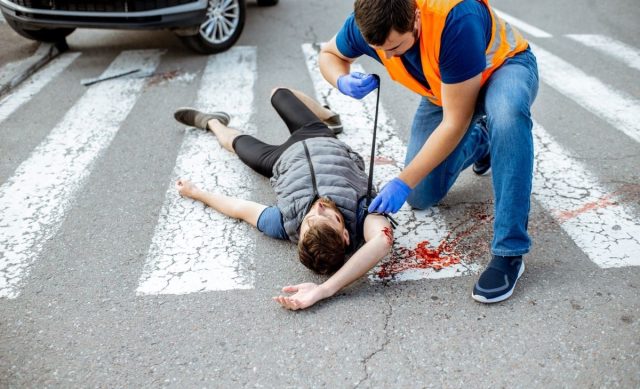Rates are still above prepandemic levels, however
By Physician’s Briefing Staff HealthDay Reporter
TUESDAY, June 25, 2024 (HealthDay News) — A total of 7,318 American pedestrians were killed by motor vehicles in 2023 — a dip of 5.4 percent from 2022 and the first such decline seen since the pandemic ended, according to data released Monday from the Governors Highway Safety Association (GHSA).
However, despite this decline, the 2023 number for pedestrian deaths is still 14.1 percent above prepandemic levels. Still, the news is somewhat heartening, said GHSA Chief Executive Officer Jonathan Adkins.
“A decline in pedestrian deaths offers hope that, after years of rising fatalities, a new trend is starting,” he said in a GHSA news release. “Each death is tragic and preventable. We know how to improve safety for people walking — more infrastructure, vehicles designed to protect people walking, lower speeds, and equitable traffic enforcement. It will take all this, and more, to keep the numbers going in the right direction.”
The GHSA report also offered insights into how and where pedestrians are most often killed:
There has been no big change in the kinds of vehicles driven when a pedestrian dies, only that the percentage of deaths involving light trucks (SUVs, pickups, and vans) is rising as they take up a bigger share of the motor vehicle market.
People are far more likely to be hit by a car at night (78 percent of pedestrian deaths in 2022) than in the daytime, and “nighttime fatal pedestrian crashes nearly doubled from 3,030 in 2010 to 5,798 in 2022,” GHSA said. That is a much steeper rise than happened for deaths occurring during the day.
Sidewalks are crucial. In 2022, 66 percent of pedestrian deaths occurred in locales without sidewalks. “Sidewalks can help protect people walking by providing a physical separation between them and motor vehicle traffic,” GHSA said. “But they are missing or in poor condition in many parts of the country.” Three-quarters of pedestrian deaths in 2022 were not at an intersection.
People are most endangered when walking on what the GHSA called “non-freeway arterial roads,” where 60 percent of deaths happened in 2022. But 1,300 Americans died while walking along freeways that year, too. “Stranded motorists exiting their vehicles, first responders, and tow truck drivers are all examples of pedestrians who have been killed on freeways,” the GHSA said. “All states have Move Over laws, but they are difficult to enforce.”
Alcohol is too often a factor, as well. “In 2022, 30 percent of pedestrians 16 and older killed in motor vehicle crashes had a blood alcohol concentration of 0.08 or higher,” the GHSA said. That was true for 19 percent of drivers who killed a pedestrian.
What can be done to bring these numbers down and prevent senseless tragedies on America’s roadways? According to the GHSA, “traffic safety cameras and engaging with unhoused populations” who are at particular risk of roadside deaths is crucial. Adding in or repairing sidewalks could also help, as could digital alerts that warn drivers of vehicles parked on the roadside.
Copyright © 2024 HealthDay. All rights reserved.



















